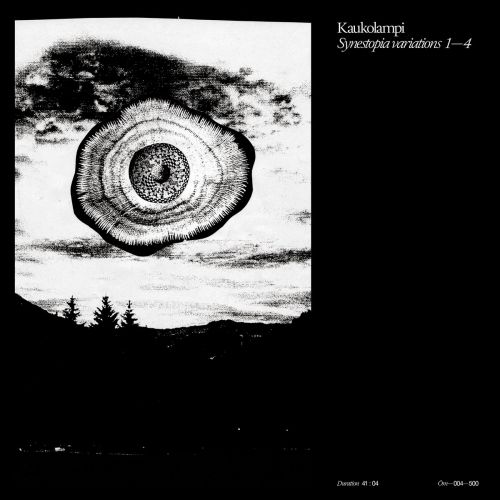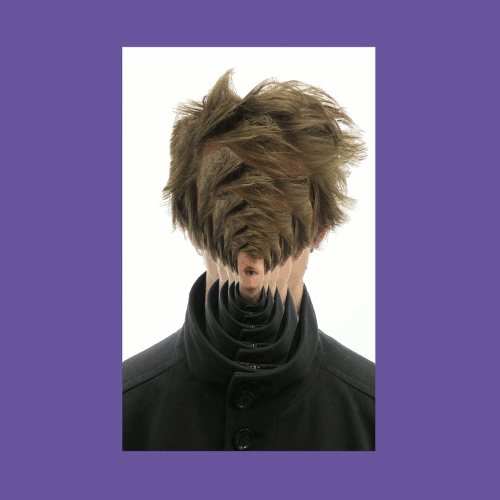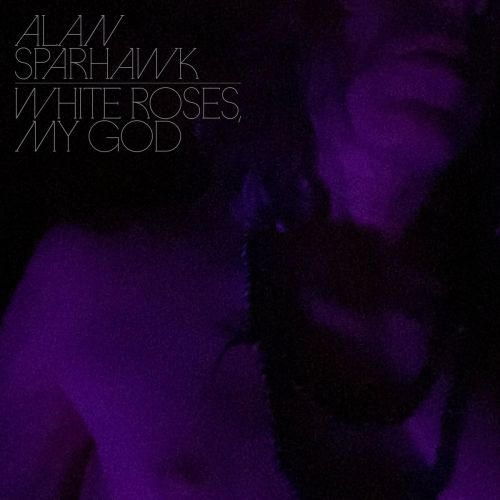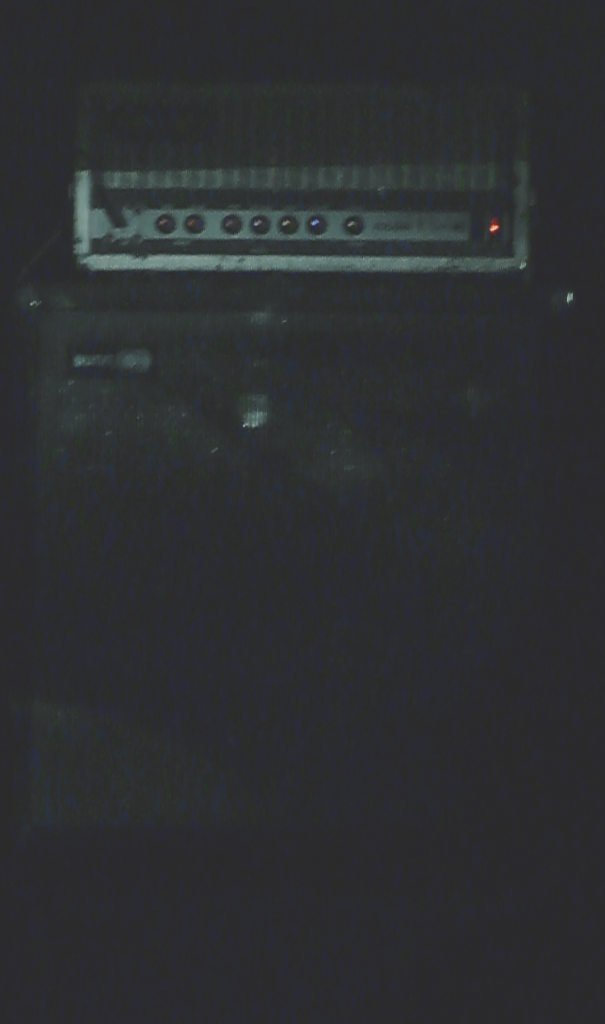 L’Embobineuse, Marseille.
L’Embobineuse, Marseille.
20 December 2013
The first thing to notice – after being amused and bemused by the number of variously-mutilated teddy bears peppering L’Embobineuse‘s decorations (nailed to the ceiling; as the head of a nude mannequin in a fish tank) as well as noticing the number of SunnO))) stencils which have presumably recently appeared on every available surface in the place – including its in-car 3D cinema) – about the venue is the way in which the entire back of the stage is taken up with Stephen O’Malley‘s six Sunn cabs, three Sunn amp heads and two more Ampeg bass amps and cabs. What was that about a wall of sound?
With GRIM‘s eleventh annual Nuit d’Hiver festival finding itself part of Marseille’s occasionally controversial year as European City of Culture, the organisers have taken the opportunity to bring some of the finest noise and doom artists in France down south for a night of crushing sonics. Unfortunately, having entirely missed the opening acts, including the heavyweight sludge of Aluk Todolo, it rests on O’Malley and his amplifiers to provide the late night drones. And what drones they are – from the opening chord he strikes on his Les Paul until the final conclusion some 80 minutes later, his set provides a relentless scouring of the ears and shaking of the furnishings.
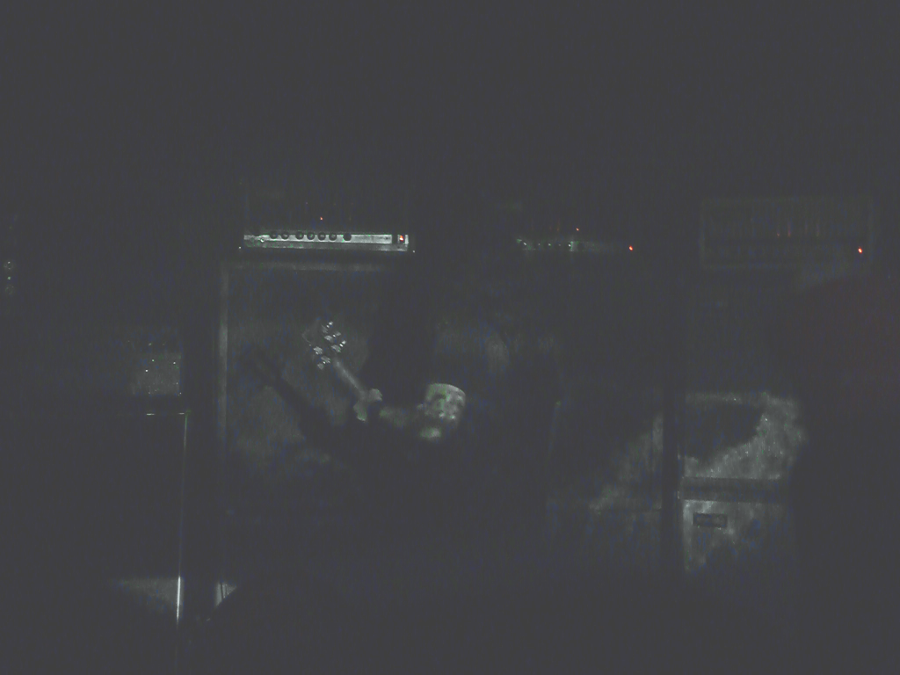 Accompanied by a stark, flickering video which sends what seems like candle wax dripping (before morphing into a black sunspot pulsing) across the speaker cabinets in flickering sprays, O’Malley performs what Boris‘ album title so aptly terms an act of Amplifier Worship, though tonight celebrated without need for his cowled robe of the more theatrical SunnO))) shows. Costume or not, sans smoke (for the most part), O’Malley remains something like a high priest of reverberating matter, celebrating volume and mass through the medium of Brobdingnagian sound. Every so often he lifts his drink up high to provoke a similar response from the crowd packed into the humming darkness (including among them the venue’s dog, who after a while calmly comes and sets themselves down for a sonic bath in front of the stage). That and his repeated hand gesture which somehow symbolises a physical grasping of the waves of sound he and his diverse machineries are pumping into the air, the amps’ valves softly glowing in a line of dim orange warmth like festive candles on this Winter Solstice eve.
Accompanied by a stark, flickering video which sends what seems like candle wax dripping (before morphing into a black sunspot pulsing) across the speaker cabinets in flickering sprays, O’Malley performs what Boris‘ album title so aptly terms an act of Amplifier Worship, though tonight celebrated without need for his cowled robe of the more theatrical SunnO))) shows. Costume or not, sans smoke (for the most part), O’Malley remains something like a high priest of reverberating matter, celebrating volume and mass through the medium of Brobdingnagian sound. Every so often he lifts his drink up high to provoke a similar response from the crowd packed into the humming darkness (including among them the venue’s dog, who after a while calmly comes and sets themselves down for a sonic bath in front of the stage). That and his repeated hand gesture which somehow symbolises a physical grasping of the waves of sound he and his diverse machineries are pumping into the air, the amps’ valves softly glowing in a line of dim orange warmth like festive candles on this Winter Solstice eve.
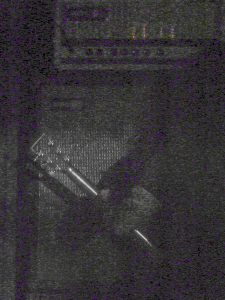 Being immersed so thoroughly in a sound which eventually erases any reliable indicators of time, apparently having now had no starting point within living memory, seemingly always present in this room among these people – one of whom even waves her lighter dangerously close to her fellow audience members as she dances in a slow, self-sustaining lope to an arrhythmic layer of music which most would consider not to be music at all. The roar shoves and shapes the air in the room, so that the very attitude of the listener’s body can affect the sound, and each turn of the head shifts the tones subtly to make for a new perception of the highly abstracted soundscape streaming relentlessly into out of the speaker cones.
Being immersed so thoroughly in a sound which eventually erases any reliable indicators of time, apparently having now had no starting point within living memory, seemingly always present in this room among these people – one of whom even waves her lighter dangerously close to her fellow audience members as she dances in a slow, self-sustaining lope to an arrhythmic layer of music which most would consider not to be music at all. The roar shoves and shapes the air in the room, so that the very attitude of the listener’s body can affect the sound, and each turn of the head shifts the tones subtly to make for a new perception of the highly abstracted soundscape streaming relentlessly into out of the speaker cones.
There is a certain amount of willing suspension of disbelief required to consider that one person can move his guitar to modulate the feedback in front of the speaker cabinets while playing minimal riffs for so long and make it not simply intellectually interesting but actively engrossing. In this sense, what O’Malley does (alone or with SunnO))) ) is perform a sort of magick which demands an auto da fe from the audience in order to accept that there is a purity to be found in the sound of these overdriven amps, a saturated om from the centre of the universe externalising the internal sound of blood rushing through the ears in an ouroubouros of seemingly unendingly cyclical, valve-driven grind. When the final moment comes, it does so not with a crescendo or a rising riff building to any kind of climax, but with the simple flick of an electrical switch, and the resulting still-reverberating silence.
-Richard Fontenoy-
